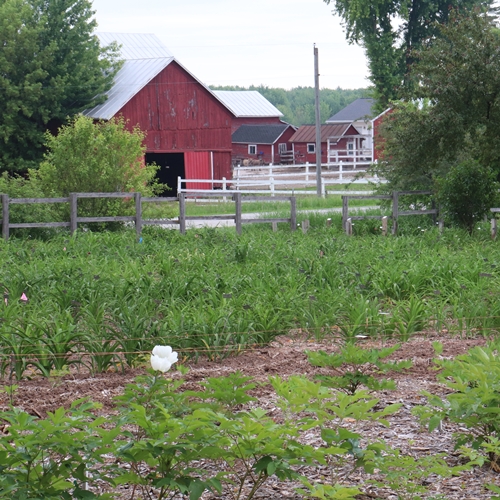Introduction to Culture and Care
For a Lifetime of Beauty-Learn About Growing Needs
Visit one of the following pages for specific culture and care information.
Herbaceous Paeonia | Woody Paeonia | Intersectional Paeonia | Lilium | Guides and Articles | Glossary of Terms
Solaris Farms takes pride in the plants we sell, not only for their flowers, but for their ability to withstand and prosper in difficult climate conditions. Hardiness has been a long debated and often misrepresented topic. Many different systems have been used to describe a plant’s hardiness, most with mixed results. Our aim is to grow the plants we offer in an unmulched field, without protection or extra care. The soils in Northeast Wisconsin are heavy and often do not allow infiltration during winter months, causing a great deal of icing on the surface. In our experience, the behavior of water and its impact on plant health during winter months is the most important factor in determining hardiness. Our plants have been tested in a challenging environment and we are confident you will experience similar successes with the plants we offer.
USDA Hardiness Zones have long been the standard in describing a plant’s hardiness, but this system was developed for woody plants that persist above ground (trees, shrubs and some perennial flowering garden plants). Plants that die to the ground each autumn cannot be systematically categorized using USDA Hardiness Zones. Temperatures vary greatly in the soil and seldom if ever reach lows that the atmosphere experiences. Therefore plants that die to the ground each autumn and/or have plant crowns not in direct contact with the air, such as daylily, lily, and herbaceous peony, can not be systematically categorized using USDA Hardiness Zones.
Gardeners that practice their skills near the western edges of the Great Lakes tend to have climate conditions that fluctuate greatly during fall, winter, and spring seasons. These conditions seldom include the lowest temperatures, but often produce cold, wet soils that can impact plant growth adversely. Drought in heavy soils can also be problematic since plant root systems are adapted to having large amounts of water available. Rapid cooling and warming throughout the winter season causes surface icing and often plant suffocation…and the list can go on and on.
One might ask, why bother growing plants in such conditions, if the failure rate is so high? Northeast and Eastern Wisconsin has exceptionally fertile soil and summer conditions are outstanding for growing many perennials. Certain types of plants that produce dormant characteristics do exceptionally well here and will do equally well across much of the northern tier of North America. With this in mind, we feel our nursery is in an excellent position for testing plant hardiness and for developing new hardy varieties. We are beginning to see that plants developed in other northern areas are not necessarily hardy in our conditions, but our plants seldom have trouble in those areas. For instance, we often cannot grow the evergreen daylilies produced in Minnesota, Ohio, etc., but these same areas do not have difficulty with our plants. In all likelihood, it is a combination of soils and the behavior of water in winter that makes a great difference.


